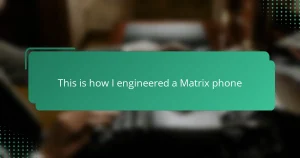Key takeaways
- Science fiction props blend creativity and practical design, functioning as both storytelling tools and innovation catalysts.
- 3D printing revolutionizes prop creation, offering precision and accessibility while allowing for detailed and intricate designs.
- Selecting the right materials enhances the realism of props; combining different plastics can improve durability and tactile experience.
- Post-processing, including meticulous sanding and painting, transforms 3D-printed objects into convincing, storytelling-driven props.

Understanding Science Fiction Props
Science fiction props are more than just objects; they are gateways to other worlds. When I first held a detailed replica in my hands, I felt a connection to the story it belonged to—a tangible piece of imagination brought to life. Have you ever wondered what makes a prop truly believable in a futuristic setting?
From my experience, the key lies in blending creativity with practical design. Sci-fi props often need to look advanced yet functional, sparking curiosity without overwhelming the viewer. It’s a delicate balance that challenges both the maker and the audience to suspend disbelief.
What fascinates me most is how these props can evoke strong emotions and inspire new ideas. They are not just tools for storytelling but catalysts for innovation, pushing us to imagine the possibilities of tomorrow. Isn’t that the true magic behind every science fiction creation?
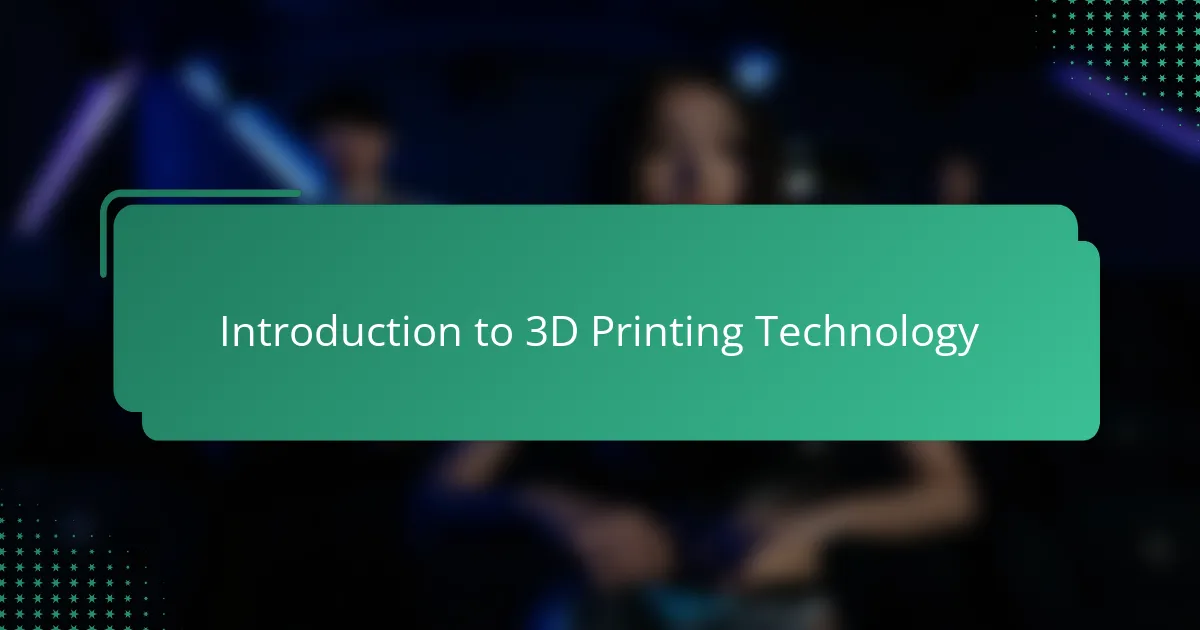
Introduction to 3D Printing Technology
3D printing technology has completely transformed how I approach creating science fiction props. Instead of relying on traditional sculpting or molding, I can now design a detailed model on my computer and see it materialize layer by layer right before my eyes. Have you ever experienced the thrill of holding something you imagined taking physical form almost magically?
What strikes me about 3D printing is its precision and accessibility. Whether it’s intricate gears or smooth futuristic surfaces, this technology allows me to achieve details that were once impossible or too costly to produce. It’s like having a workshop in my living room that can turn dreams into reality overnight.
I still remember the first time I printed a small part for a cyberpunk prop—it wasn’t perfect, but watching the machine work made me realize the potential unlocked by this tool. How often do we get to witness creation so directly? For me, 3D printing is both an art and a science, making every project feel like a new adventure.
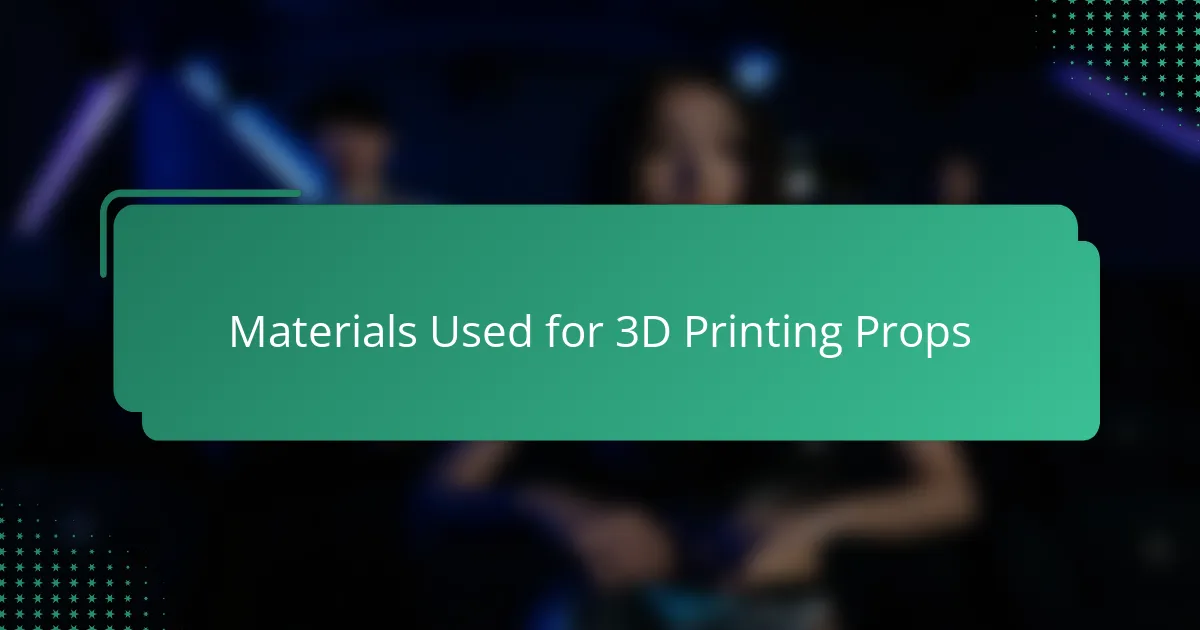
Materials Used for 3D Printing Props
When I started selecting materials for printing my cyberpunk weapon, I quickly realized that the choice isn’t just about what looks good, but what feels right in the hand. PLA, for example, was my go-to because it’s easy to print and offers a smooth finish that captures fine details beautifully. Have you noticed how some plastics just bring that sleek, futuristic vibe instantly?
But not all parts of my prop could rely on PLA alone. For elements that needed extra strength or a bit of flexibility—like grips or joints—I switched to ABS or TPU. That change made a world of difference; the durability gave the prop a solid, believable heft, as if it could actually fire in a dystopian world.
What surprised me most was experimenting with specialty filaments, like metallic or glow-in-the-dark options. It was thrilling to see how these materials could elevate the realism and bring subtle effects to life without complicated post-processing. Do you think a prop’s material can tell part of its story? For me, absolutely—it’s in the feel and finish where the fantasy starts to become real.
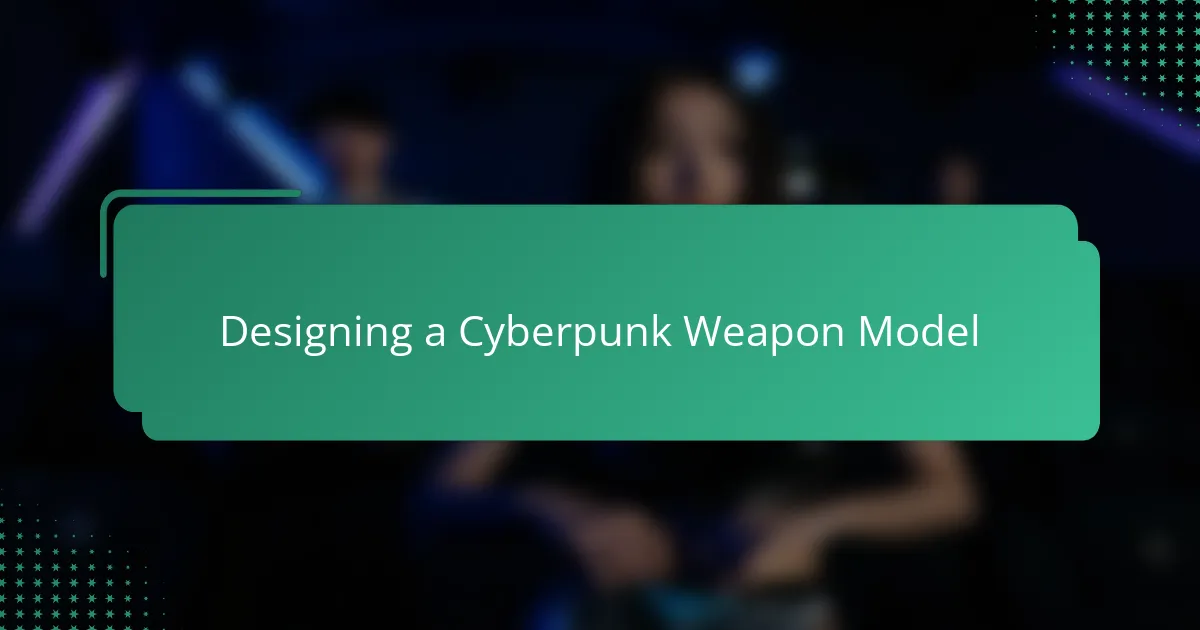
Designing a Cyberpunk Weapon Model
Designing a cyberpunk weapon model always starts with imagining its story and function. I like to think about who would wield this weapon and what futuristic world it belongs to—this helps guide every curve and detail. Have you ever caught yourself sketching a sleek, intimidating shape and wondering if it truly looks like it belongs in a neon-lit dystopia?
In my process, I rely heavily on blending sharp angles with smooth surfaces to capture that gritty yet advanced vibe characteristic of cyberpunk aesthetics. It’s a challenge to keep the design complex enough to be visually interesting but not so intricate that 3D printing becomes a nightmare. Striking that balance took a few rounds of trial and error—each failure felt like a step closer to nailing the perfect look.
One thing I learned fast is that incorporating layered textures and asymmetry adds personality and realism to the model. When I finally saw my digital design with all its tiny ridges and vents rendered in 3D software, it felt less like a virtual object and more like a tool engineered for the future. Doesn’t great design make you feel like you’re holding a piece of another world in your hands?
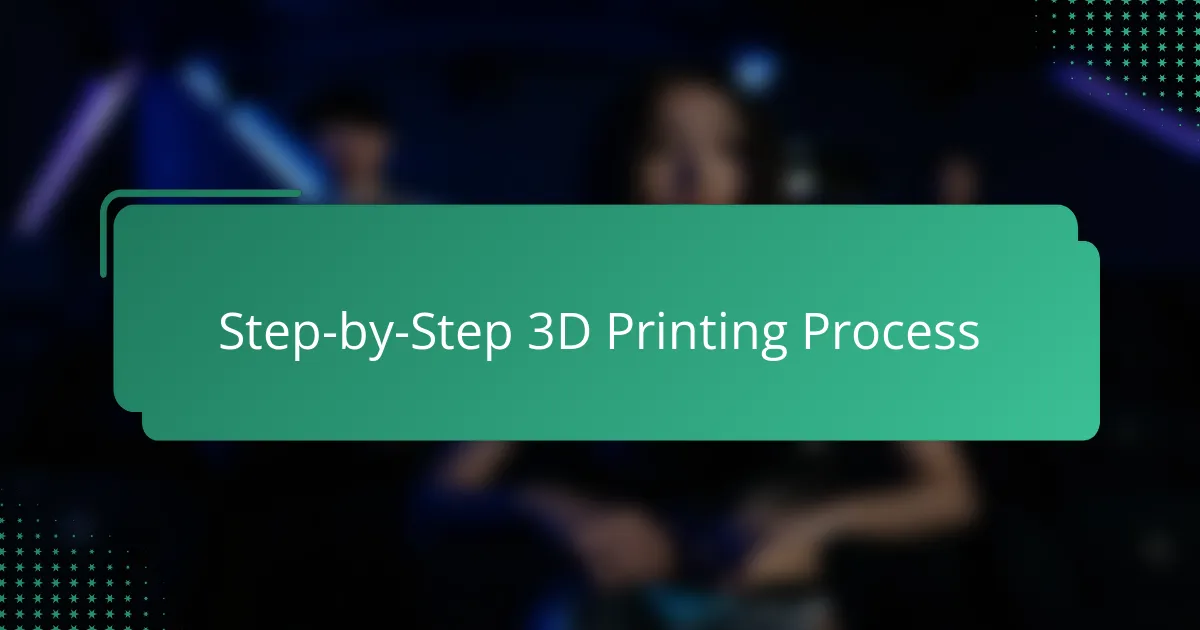
Step-by-Step 3D Printing Process
The very first step I took in the 3D printing process was preparing the digital model, slicing it into thin layers with software tailored for my printer. I remember feeling a mix of excitement and nervousness as I adjusted settings like layer height and infill density, knowing these tiny details would affect the final look and strength. Have you ever felt that rush of anticipation before hitting “print,” wondering if your design will truly come to life?
Once the print started, watching the machine build the weapon layer by layer was a mesmerizing experience—almost hypnotic. The steady hum and slow, precise movements made me appreciate how meticulous this process is; every pass adds another sliver of reality to what was once just pixels on a screen. Sometimes, the print took hours, but every minute spent felt like an investment in crafting something extraordinary.
After printing, the real transformation began with careful cleanup—removing supports, sanding rough edges, and assembling parts with glue or screws. It’s in this hands-on phase that the prop really started to feel tangible, bridging the gap between digital design and physical presence. Do you find that working directly with your hands adds a deeper connection to your creation? For me, it absolutely does; it turns technology into artistry.
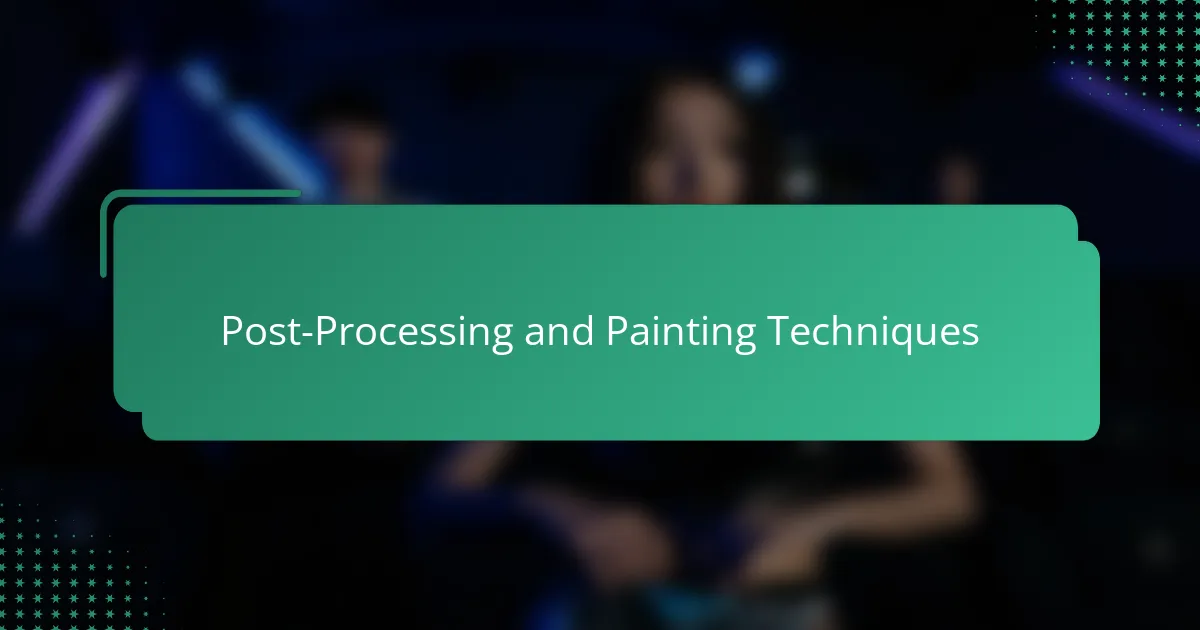
Post-Processing and Painting Techniques
Post-processing is where the magic intensifies. I’ve found that meticulous sanding is essential to smooth out those pesky layer lines 3D printing leaves behind. Have you ever spent hours polishing a surface, only to watch it transform from rough plastic to something almost metallic in texture? That moment always feels like breathing life into the prop.
When it comes to painting, I treat it like layering a story. Primer is my trusty first step—it helps the paint stick and reveals imperfections I might’ve missed. From there, I love using a mix of metallic paints and weathering techniques to give the weapon that authentic, battle-worn look. Have you ever tried dry brushing? It’s subtle but adds so much depth and realism, making the prop look like it’s survived countless skirmishes in a neon-soaked alley.
One technique I swear by is adding small decals or panel lines with fine brushes or pens. These tiny details capture that cyberpunk essence perfectly, suggesting advanced tech and complexity without shouting it. In my experience, it’s these nuanced touches that make the difference between a prop that looks like a toy and one that feels part of a dystopian future. Doesn’t it amaze you how a little paint and patience can transform plastic into storytelling?
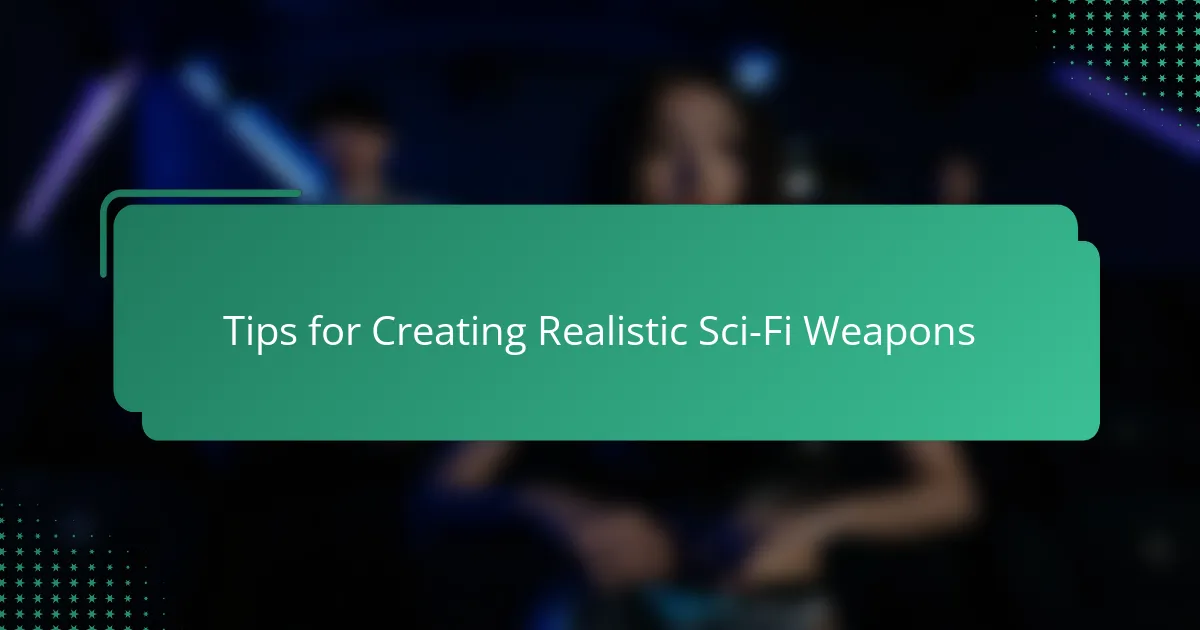
Tips for Creating Realistic Sci-Fi Weapons
One tip I’ve learned early on is that realism starts with believable wear and tear. Perfect, pristine surfaces tend to look artificial—adding scratches, dents, or even slight discoloration gives the weapon a history, making it feel like it’s seen action in a gritty cyberpunk world. Have you noticed how subtle imperfections suddenly make a prop more convincing?
Another crucial detail is focusing on scale and ergonomics. I always ask myself if the weapon feels like something a person could realistically hold and operate; awkward grips or unbalanced shapes break the illusion fast. When I tested different handle sizes, I realized that functionality in design often elevates the overall authenticity more than flashy details ever could.
Finally, I can’t stress enough the power of lighting and texture interplay. Using metallic or matte finishes selectively creates visual interest and suggests various materials without overcomplicating the build. Have you ever caught yourself staring longer at a prop just because the light danced on its surfaces in a way that made it look alive? That’s the level of detail worth chasing.


